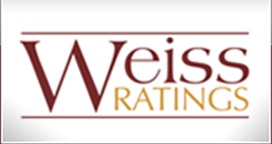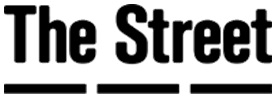Financial strength and claims-paying ability ratings of the insurer is one of the five factors of suitability. The obvious reason being that insurance is most simply defined as an agreement for the payment of a premium today in exchange for payment of a claim at some future point, the more time between policy inception and the expected claim date, the more relevant the durable financial strength and long-range claims-paying ability to overall product suitability.
The less obvious reason is when an insurer's rating is downgraded, the change often means that either the insurer's profitability has declined, the insurer's reserves have deteriorated, or both. The insurer's most immediate response to a downgrade in its ratings, and its most effective means for restoring profitability and recovering reserves, can be to increase policy costs for cost of insurance (COI) charges and expenses. In other words, when ratings go down, policy charges are more likely to be increased, and thus premiums are likely to (need to) go up.
As such, high and stable ratings for financial strength and claims-paying ability are relevant to overall suitability both for the obvious reason of ensuring death benefits will be paid and because low or declining ratings can be an early warning sign for increases in policy charges. Rating services like A. M. Best, Standard & Poor's, Moody's, Fitch and TheStreet.com continually evaluate insurance carriers for their financial strength (i.e., the profitability of the insurer's business operations) and claims-paying ability (i.e., the sufficiency of insurer's reserves compared with its future claims obligations). While rating services may focus on different key indicators or qualitative factors, all ratings reflect some combination of these two measures.
INSPECT WHAT YOU EXPECT! Use a Veralytic Research Report to measure policy expenses and know if a particular insurer is increasing or decreasing policy expenses. If you(r clients) do not know what they are paying for cost of insurance charges (COIs), fixed administration expenses (FAEs), cash-value-based "wrap fees" (e.g., M&Es) and premium loads in their life insurance policy holdings now, then there will be no way to know if or when such policy expenses are increased. Now is the time to find out.






Veralytic considers all available ratings from all ratings agencies when determining the financial strength and claims-paying ability ranking that is factored into the Star Rating for overall suitability of a particular product and assigns a full star in the Star Rating system to those insurers ranked in the top decile (top-10%), a 1/2 star to those insurers ranked the top quartile (top-25%), and no star for those insurers ranked even lower. For more information about the actual ratings from the ratings services of any of the insurers listed below, contact either an agent, broker or company representative of that insurer. Or, for an independent, empirical and objective rating of a particular product to a specific client situation that considers both the insurers financial strength and claims-paying ranking of the insurer as well as essential information about the pricing and performance of the product based on all 5 factors of suitability, request a Veralytic Research Report.
October 2012 Rating Downgrades/Watch-List
During the month of October in 2012, ratings for the insurers shown below were downgraded or placed on the watch-list by one or more of the rating services that evaluate the financial strength and claims-paying ability of insurance companies. Downgrades reported here are provided by VitalSigns, a service of EbixExchange, and are grouped their Star Rating and listed alphabetically. This is not intended to be a complete list of all insurance companies and their respective rankings.
 The below insurers are rated no-star under the Star Rating system due to ranking below the top quartile (top 25% percent) among all insurers for financial strength and claims-paying ability according to the ratings of all the major ratings agencies . Financial strength and claims paying ability is only one of the five star ratings. For a complete TIA star ratings that consider the five major factors of suitability click here.
The below insurers are rated no-star under the Star Rating system due to ranking below the top quartile (top 25% percent) among all insurers for financial strength and claims-paying ability according to the ratings of all the major ratings agencies . Financial strength and claims paying ability is only one of the five star ratings. For a complete TIA star ratings that consider the five major factors of suitability click here.
|
American Medical & Life Ins
|
|
Genworth Life & Ann Ins
|
|
Genworth Life Ins Co
|
|
Genworth Life Ins Co NY
|
Use Veralytic to Monitor Ratings AND Policy Pricing
Financial strength and claims-paying ability of the insurer is only 1 of the 5 major factors of product suitability. Because declines in ratings can signal increases in policy costs, the appropriateness of a policy should be re-evaluated when the insurer's financial strength and claims-paying ability rating is downgraded. In order to fully assess the impact of recent ratings downgrades on your clients’ permanent life insurance portfolios, or to establish a baseline by which to judge the impact of future shifts in ratings, request a Veralytic Research Report now. Just fax the detailed expense report along with the policy illustration toll free to 800-409-3222 or email to report@veralytic.com to request a Veralytic Report for your client's policy. If the policy illustration is not available, download a sample Request for Information (RFI) letter to gather the necessary policy information.
___________________________________________________________________________
Please note that different ratings services have different means and methods for determining when an insurer should be downgraded and/or placed on their watch-list, and thus different ratings downgrades and watch-lists have different meanings. For instance, only certain ratings agencies are registered with the Securities and Exchange Commission (SEC) as a Nationally Recognized Statistical Rating Organization ("NRSRO") and thus subject to SEC regulation and utilized by insurance regulators. As such, some insurers, agents, brokers and/or insurance consultants view NRSRO-registered ratings services as being a more credible indicator of a given insurance company’s reserves and claims paying ability. For a list of these ratings services who are NRSRO-registered, click here.
In addition, certain ratings are “voluntary”, which is to say the insurer must cooperate with and pay a fee to the rating service for their rating of that insurer. Of course, this cooperation can result in a rating that is based on more information and insight into the financial strength and claims-paying ability of the insurer than that available to “involuntary” ratings services. However, this also means that insurers can “shop” for the most liberal “voluntary” ratings and are usually permitted to withdraw their cooperation when they feel certain public disclosures could hurt business. Because ratings services depend on insurance company fees for revenues, and because ratings play a critical role in insurance sales and advertising, some insurers, agents, brokers and/or insurance consultants, therefore, view “voluntary” ratings as less credible due to possible conflicts of interest into the rating process (See U.S. Government Accounting Office (GAO) Insurance Ratings: Comparison of Private Agency Ratings for Life/Health Insurers – while somewhat dated, certain findings may again have relevance given recent criticism of certain ratings agencies).